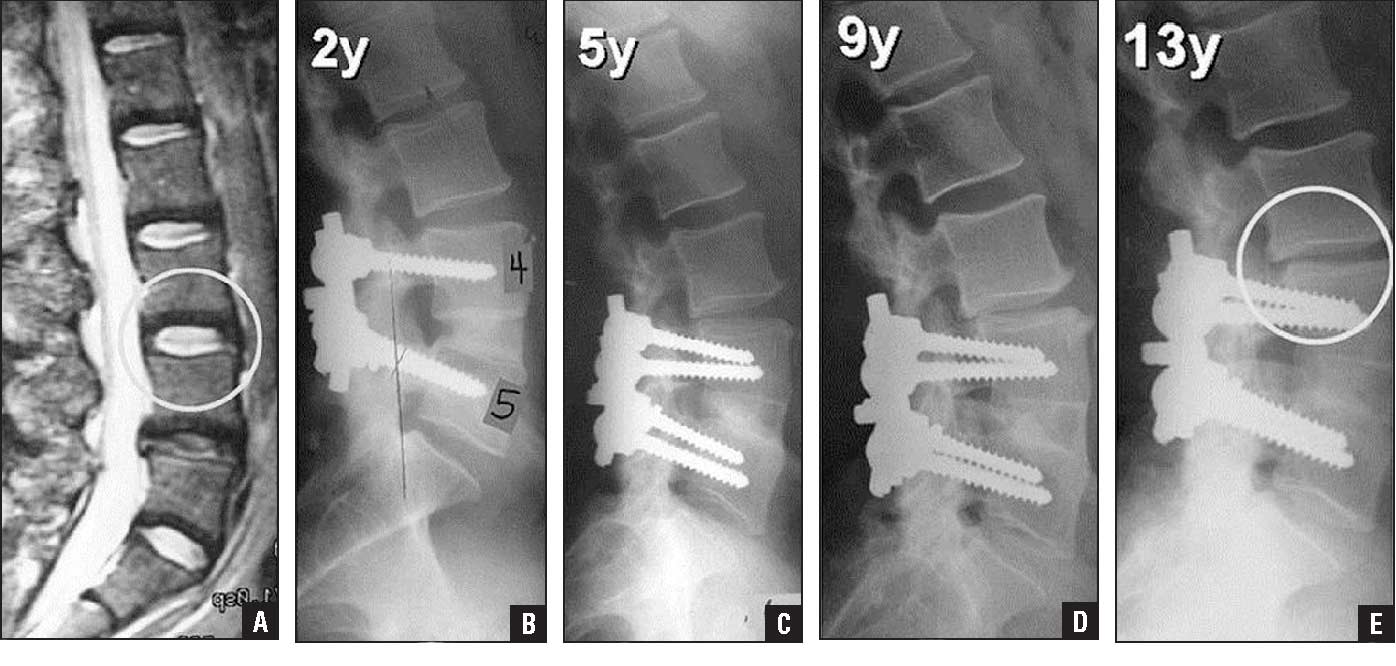Adjacent Segment Disease
Adjacent Segment Disease is a condition caused by spinal fusions where the level above or below the fused vertebrae degenerate. This is because they are make up for the lack of movement at the level that was fused. The human spine is built for movement, when one of more levels are fused together it disturbs its normal movement. Spinal fusion surgeries use bone grafts and/or hardware to permanently “lock” together two or more vertebrae. The idea is to make the section of the spine thought to be causing pain immovable. After a fusion surgery, the spine loses the ability to move at the place where the procedure was done. Limiting the ability to bend forward, arch back, twist or tilt at the specific level or levels fused. This is one of the many reasons why the doctors at the Bonati Spine Institute don’t recommend fusions.
This “locking” of the spine’s segment forces adjacent segments to compensate and try to keep the spine flexible. Unfortunately, this stresses and overloads those upper and lower vertebrae, forcing the intervertebral discs to break down and causing nerve compression and pain after back fusion leading to a condition known as Adjacent Segment Disease (ASD). ASD is most likely to occur in the motion segments of the spine used most often, such as L4/L5 and L5/S1 near the highly mobile lower lumbar region. They also tend to occur at the C5/C6 and C6/C7 near the highly mobile upper cervical region.

Adjacent Segment Disease Conditions
This overloading of the adjacent segments of the spine brought on by spinal fusions can result in a number of conditions in the adjacent segments, including:
- Bone spurs
- Spondylolisthesis
- Herniated discs
- Degenerative arthritis in the facet joints
- Stenosis (narrowing of the spaces for the nerves)
These conditions can pinch the nerves in the spine, causing pain, and conditions including:
- Radiculopathy: pain that radiates into the arms or legs
- Myelopathy: pain that travels along the spinal cord
Approximately 25% of patients who have had fusions develop Adjacent Segment Disease about 5 years post-surgery. For those who have had three- or-four level fusions 29% develop ASD at 5 years and 40% at 10 years.
Diagnosing Adjacent Segment Disease
To diagnose adjacent segment disease, your doctor will likely evaluate any radiculopathy and/or myelopathy. If your doctor can trace those types of pain back to the motion segments above and/or below your surgery site, you may have adjacent segment disease.
Treating Adjacent Segment Disease
Because the new conditions that result from Adjacent Segment Disease press on the nerves the process starts again. Usually with conservative treatment such as:
- Rest
- NSAIDs
- Physical therapy
- Cortico steroids
However should these conservative treatments fail to relieve the pain, surgery may be necessary. Many doctors simply recommend additional fusions. However, The Bonati Spine Institute recommends against spinal fusions and implants, since these procedures result in higher rates of ASD in the adjacent segments.
Additionally artificial disc replacements are sometimes recommended for ASD. However, researchers writing in the European Spine Journal, looked at nearly 15 years of data from several studies and found a complication rate for implanted artificial discs of over 50 percent. Potential complications associated with artificial disc surgery may include an allergic reaction to the implant material, implanted discs bending, breaking, loosening, or moving, and nerve or spinal cord injury, possibly causing impairment or paralysis.
The Bonati Spine Procedures have been shown to be highly effective in taking the pressure off the nerves without fusions to treat spinal conditions and very successful in avoiding adjacent segment disease. These procedures produce far fewer complications and keep the motion of the spine, therefore, the potentially deleterious effects of spine and ASD is avoided. The Bonati Spine Procedures can also benefit patients who have already had spinal fusions and suffer from ADS symptoms. For more information on how these procedures may help you avoid ASD please contact us.
